[ad_1]
Beyond the old buildings of Cononish Farm at Eas Anie, beyond the corrugated sheep sheds and the deer-control fence, Stanley Lister has a weird calm for a man standing so close to a truck of explosives. Nearby, an incinerator bin smokes with detonators cooling off in the late summer breeze and the air is thick with the smell of phosphorus. “Here, the dangers are the midges,” he says through his face mask, before donning a hard hat and ear guards. “Oh, and watch out for the clegs [horseflies]. Nasty buggers.”
Lister, a 29-year-old mining engineer from Lochgilphead, is high up a hillside inside the Loch Lomond and Trossachs national park in Argyll, standing outside the Cononish goldmine near Tyndrum, a petrol stop on the road north to the wildest places in Britain. Action-ready, he is preparing for the next blast, a ritual that takes place twice a day deep inside Beinn Chùirn, home of the only commercial goldmine in the UK, where the mine’s Australian-founded owners, Scotgold Resources, claim £200m is hiding in plain sight. With each detonation, the miners advance three metres down one of three headings, or gold caves, ever closer to their prehistoric reward. “It’s a bit romantic, but I love being underground,” Lister says, splashing through a silvery pool of rainwater towards the mouth of the 1km-long mineshaft with his colleagues. “It’s peaceful and quiet. No distractions.”
The Cononish goldmine is strangely beautiful. A cathedral for geologists, it was first hollowed out in the mid-80s by an Irish resources firm; they got only as far as test-drilling an exploratory tunnel before the price of gold plummeted and they were forced to close. Today, it looks like your idea of what a modern goldmine should be: unnerving, with a cool, dank atmosphere – a constant 12C – and a tunnel floor that is uneven and pockmarked with glossy puddles. One can inspect the roof, jigsawed together with rock bolts, mesh and sprayed concrete, in case, as operations manager Jason Saint, 41, puts it later, one of the fractures splits. “This is a working mine,” the Brisbane native says, matter-of-factly. “Shit does happen.” The rock walls are stained with sulphides and when the headlamps shine on each miner as they face into the dark, it gives them a golden aura in the gloom. Little wonder some see it as a kind of treasure hunt.
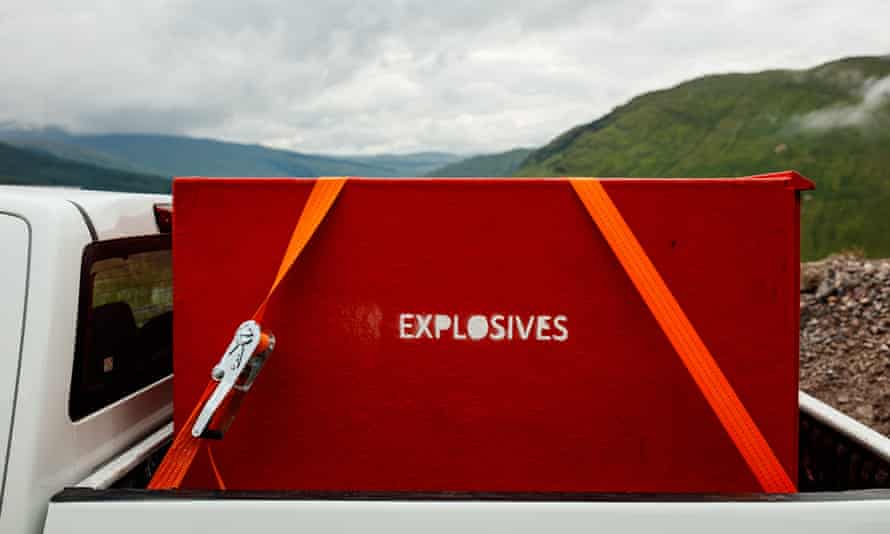
Goldmining in a Scottish glen might seem cavalier, but all the colours you can see on the rockfaces – a spectrum of streaks from snow-white quartz to silver to dirty gold – tell you exactly why it’s worthwhile. The mine reeks of ambition, with expensive tech doing the hard graft at the onsite gold processing plant, and soon it will ramp up to a 24/7 operation, principally, according to senior geologist Rachel Paul from Edinburgh, who leads the all-female geology team, because they can’t get the gold out fast enough.
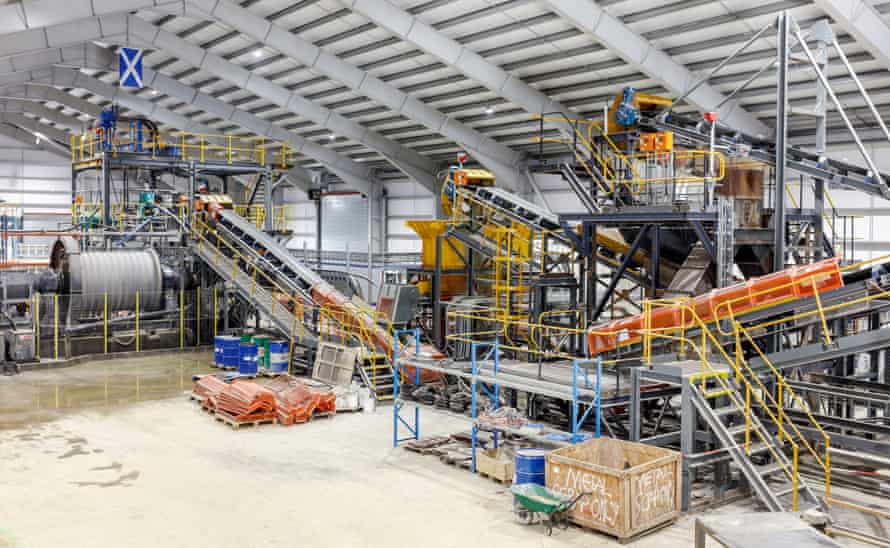
The seam has enough ore for nine years of production, she says, with up to 30g of gold hidden in every tonne; the stockpile at the entrance is already worth over £700,000. “What’s exciting is there’s a tradition of mining in Central Asia, Africa and Australia, but to do it on home soil is totally different. You see a TV show like Outlander, with its emotional tug for visitors, and that’s a market we can tap into. Why not a piece of Scottish gold as a souvenir?”
Scotgold aren’t the only people to have spied opportunity in Scotland’s rolling hills and wild spaces. Through lockdown, a handful of sediment-carrying rivers and streams transitioned from salmon fishing and paddling playgrounds to backdrops for a surge of local prospectors. Spurred on by furlough and extra time at home, the socially distanced gold panner joined other new hobbyists such as the night walker and urban gardener. Prospecting offered solace in an embattled world and since restrictions have eased, there has been no let-up in the gold rush.

Shift your gaze slightly north from Tyndrum to Glen Orchy, with its pine-skirted banks and shiny waterfalls, and you might find Danny Weir, 53, the ringleader of Scotland’s amateur gold panning community. A gregarious, full-time carer, today dressed in camouflage and fishing waders, he has helped galvanise a growing number of enthusiasts. At times, he teaches newcomers how to do it themselves, or he is knee-deep in the flowing water himself, working a makeshift sluice to flush out precious minerals from the sediment. The skill, he says, is to be patient, use a plastic sluice tray rather than pan (it helps process more material faster) and adjust the variables – water flow, slope, tray angle – until the gravel moves through at the correct speed. Only then can you find the heavier gold particles left behind.
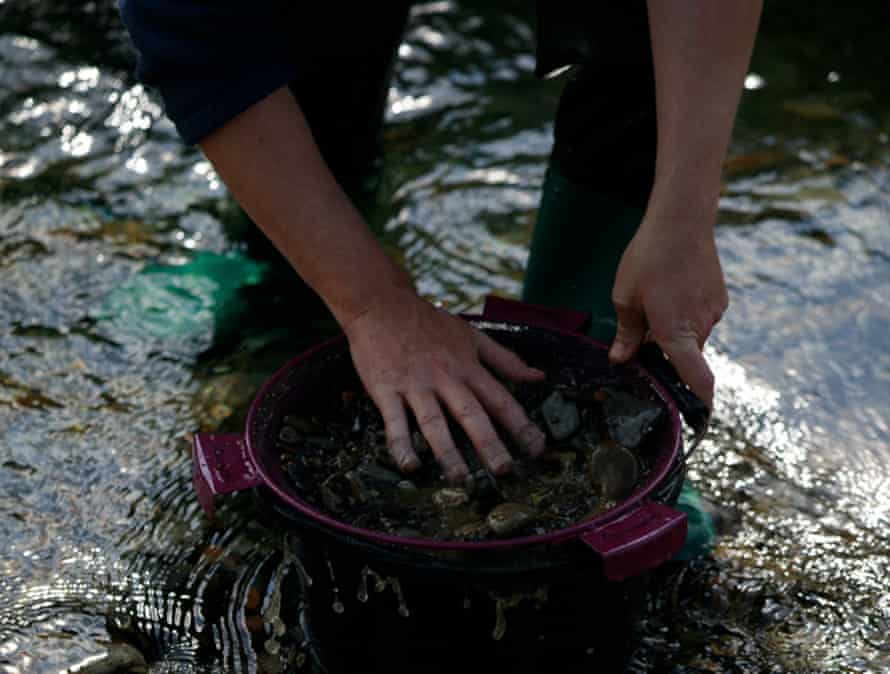
“I taught two ladies today,” he says. “First-timers. They caught about six bits. Not worth much, but it’s the thrill of the hunt. And building a dam is like being a wee boy again. I love it.”
Weir, from the Ayrshire town of Irvine, first started panning eight years ago, “because of my love of cowboy films”. Learning the tricks of the trade on Mennock Water in the Southern Uplands near Wanlockhead, a former leadmining village, he might see six others over a long weekend. Now, he’s the central figure in a regular meet of 60 like-minded dabblers. That’s a tenfold increase, and of the wave in interest across the country, he says: “Gold fever is a thing and I’ve seen a huge upswing. It’s no surprise after what people have been through recently. Now folk can travel again, they come all the way from Cornwall and Devon.”
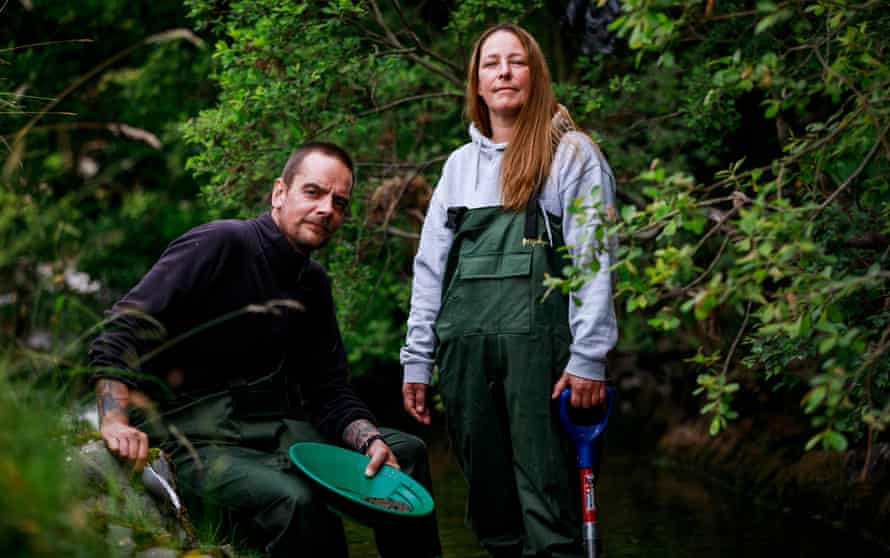
Many prospectors are first inspired by a visit to Wanlockhead’s Museum of Lead Mining, where a licence to hand-pan for gold costs £10 a person or £20 a family. Without a permit, it remains illegal: tight legislation states that any gold or silver found in the country should not be removed or sold without permission from either the crown or the incumbent landowner – and in the case of Mennock Water, Scotland’s most popular panning spot, that’s the Duke of Buccleuch, one of the richest people in Britain.
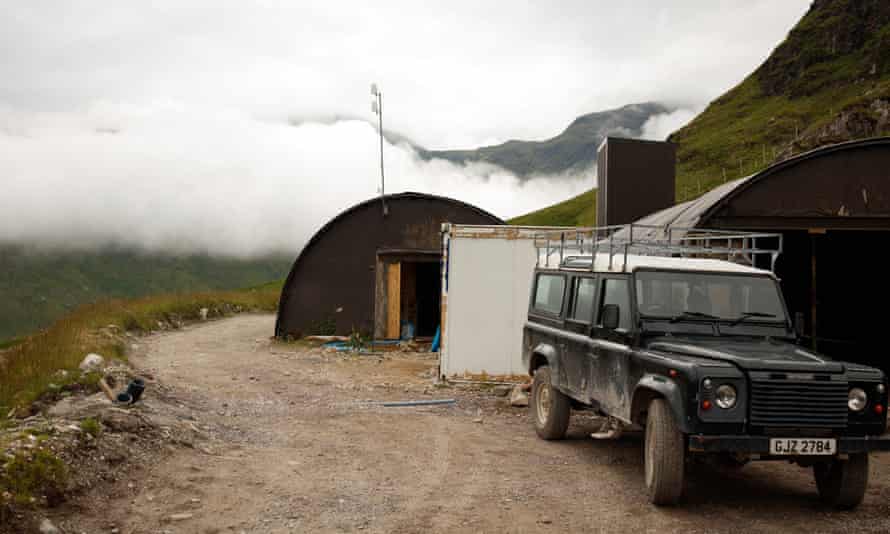
Of course, today’s activity pales into insignificance in relation to the bona fide Scottish gold rush of 1869, caused when news of a profiteering, have-a-go prospector returning from Australia’s goldfields made the local newspaper, prompting 600-odd adventurers to arrive on the Suisgill and Kildonan burns in Sutherland with their pans and shovels. Images from the time show bearded, wiry men and rows of makeshift timber huts built along a riverbank near Helmsdale, with a vibe something akin to a tartan Klondike. All the same, seeing scores of bodies bent over in a hard-to-reach glen beneath Scotland’s highest village feels dramatic, even if the process itself can be outright pedestrian.
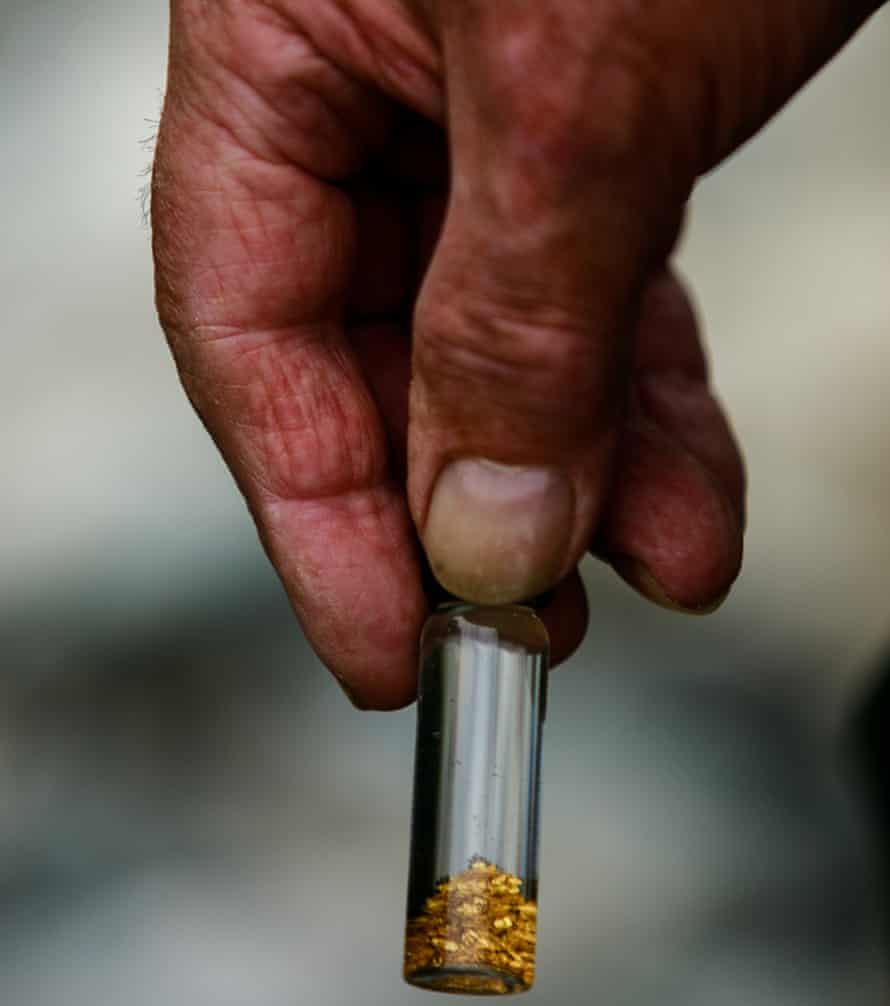
Among today’s permit-holders are newcomers Derek McNab, 47, a gardener, and Lisa Kain, 46, a cook, who have travelled from South Lanarkshire every weekend for the past month. Their attitude is one of infectious awe – “It’s the beautiful place, the camping in nature, the thrill of finding something,” McNab says. “Plus a little competition between us is part of the fun,” Kain adds.
For David Allison, 41, a lab analyst from Nottingham, coming this far north in search of bullion was prompted by his love of the countryside: “Even if I don’t find any gold.” Then there is John Smillie, 72, from Airdrie, who was hooked first time. “I want my ashes scattered here: it’s now my favourite place in the world.”
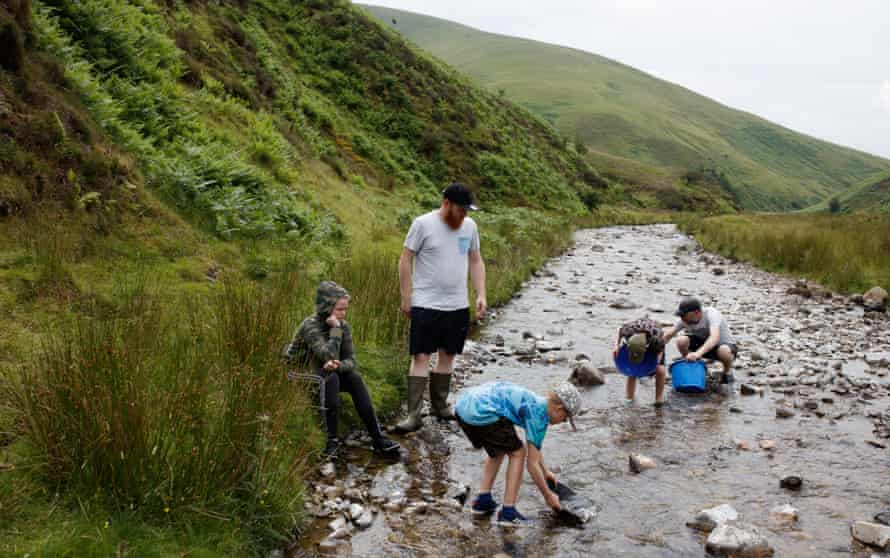
Farther along the stream are two processing plant co-workers and their sons from nearby Kirkconnel in Dumfries and Galloway. Their sodden trainers and running shorts – hardly the traditional panner’s uniform of midge-resistant, waterproof clothing – are giveaways that they take a more pragmatic approach. “Panning gets Kai off the Xbox, especially during school holidays,” says Paul Stobbs, 31. “I’m taking an interest now, but only because he set up my sluice for me,” his son replies, watching the stream flow by as much as the bleating sheep and clouds in the sky.
It’s rare in life to see all ages and walks of life together, and there’s no simmering tension between the various factions as they seek the same reward. Instead, there is only camaraderie and a sense of restless ambition as though the hand-panners are all working towards a common goal. Of little doubt, the good times are coming back to the hills – both farther north at the Cononish mine where the next milestone gold pour is only weeks away, and in the more placid glens of southern Scotland. And if someone gets lucky, then perhaps they all will.
[ad_2]
Source link
